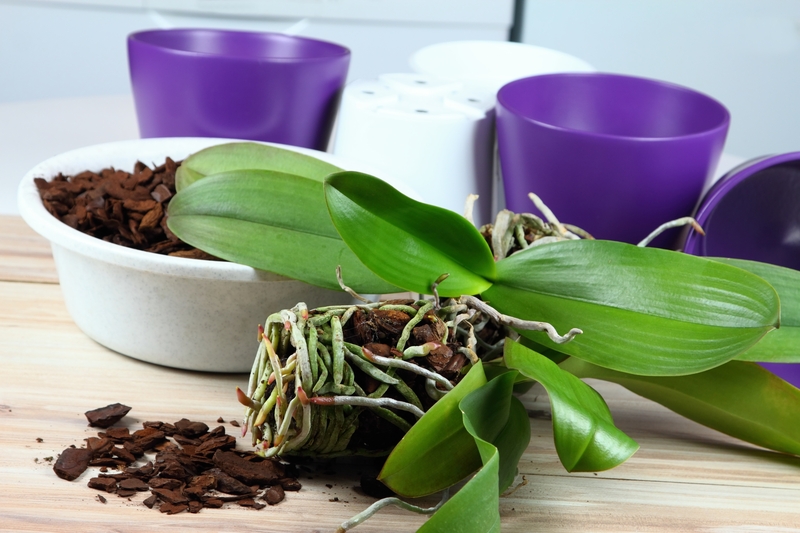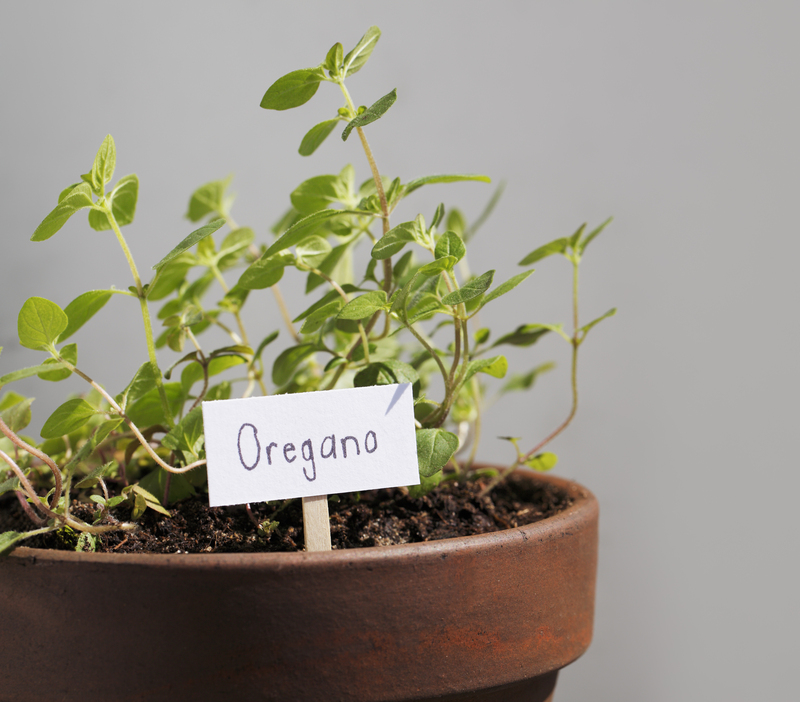Gardens Growing Solutions: Responding to Climate Challenges
Posted on 28/06/2025
Gardens Growing Solutions: Responding to Climate Challenges
Climate change poses a significant threat to our global environment, and the impact is felt right in our backyards and gardens. With unpredictable weather patterns, water scarcity, and increased pest pressures, finding innovative gardens growing solutions is more important than ever. Gardeners, horticulturists, and homeowners across the world are rising to meet these climate challenges head-on. Discover how you can adapt your gardening practices to build thriving, resilient, and sustainable landscapes for the future.
Understanding Climate Challenges in Gardens
The effects of climate change are evident in our outdoor spaces. Hotter temperatures, irregular rainfall, increasing droughts, and new pest invasions are transforming the way we garden. Recognizing these climate-driven shifts is the first step to creating gardens growing solutions that ensure our plants not only survive but also flourish.
- Prolonged Droughts: Reduced water availability leads to stressed plants and limited garden productivity.
- Extreme Heat: Many traditional plants can't withstand prolonged heatwaves or fluctuating temperature cycles.
- Unpredictable Weather: Sudden frosts, storms, and heavy rainfall can damage both soil and plants.
- New Pest and Disease Patterns: Warmer climates bring new pests and diseases that traditional plants may not resist.
Why Gardens Growing Solutions Matter
Gardening is not just a hobby--it's a way people contribute to biodiversity, carbon sequestration, and food security. By adopting climate-resilient gardening techniques, we become part of the solution in the fight against the climate crisis.

Climate Resilient Gardening: Key Strategies
Responding to climate challenges in your garden requires a combination of forward-thinking, research, and a willingness to experiment. Let's explore some effective gardens growing solutions to nurture resilient gardens in a changing climate.
1. Choose Climate-Resilient Plants
Not all plants can withstand new climate extremes. By selecting drought-tolerant, heat-loving, or native species, you will establish a foundation for a hardier garden.
- Native plants are naturally adapted to local climatic conditions and typically require less water and care.
- Drought-tolerant varieties such as lavender, sedum, and yarrow withstand dry periods better than moisture-loving species.
- Deep-rooted trees access water stored deeper in the earth, providing vital shade and cooling effects.
2. Diversify Your Plant Selection
Diversity is resilience. By growing a variety of species, you reduce the risk of losing your entire garden to a single pest or weather event. Mix annuals, perennials, vegetables, herbs, and ornamentals to create dynamic, robust landscapes.
- Plant a mix of edible and ornamental plants to optimize ecosystem benefits.
- Include pollinator-friendly species to support bees, butterflies, and beneficial insects.
- Stagger planting times through succession planting to ensure continuous harvests and blooms.
3. Implement Water-Wise Gardening Solutions
Water scarcity is a key challenge for many gardeners. Conserving water and using it efficiently are at the heart of sustainable gardens growing solutions:
- Mulching: Apply organic mulch to suppress weeds, keep soil cool, and retain moisture.
- Drip irrigation: This efficient system delivers water straight to plant roots, minimizing evaporation.
- Rainwater harvesting: Collect and store rainwater from your roof for garden use during dry spells.
- Soil improvement: Amend soil with compost and organic matter to enhance water retention.
4. Smart Garden Design for Climate Adaptation
Design your landscape to combat climate extremes:
- Shade trees and living walls can cool outdoor spaces and protect sensitive plants.
- Windbreaks made of hedges or fences reduce wind stress and evapotranspiration.
- Terracing and swales help manage water runoff and prevent erosion on sloped properties.
5. Building Healthy, Resilient Soils
Soil health is the foundation of every successful garden. Healthy soils retain more water, provide nutrients, and support robust plant growth even under stress.
- Add organic matter through compost, manure, or cover crops to nurture beneficial microorganisms.
- Avoid over-tilling, which can break down soil structure and increase runoff.
- Grow soil-building plants like clover or vetch in the off-season as green manures.
Innovative and Eco-Friendly Gardens Growing Solutions
Modern technology and traditional wisdom offer exciting ways to make gardens more resilient and eco-friendly. Here are several methods gaining traction:
Permaculture Principles
Permaculture is a design philosophy focused on creating self-sustaining systems. In gardening, this means utilizing techniques that mimic natural ecosystems. It's a core component of many gardens growing solutions to climate issues.
- Companion planting leverages natural plant partnerships for pest resistance and improved yields.
- Use perennial crops that regrow each year, reducing soil disturbance.
- Let leaves and organic debris return to the soil to build fertility in place.
Vertical Gardening and Green Roofs
Space-efficient gardening methods like vertical gardens and green roofs are excellent urban solutions for climate adaptation.
- Grow food on walls or roofs, reducing the urban heat island effect in cities.
- Choose planting containers made from recycled materials to enhance eco-friendliness.
- Install rain gardens to capture stormwater and support local wildlife.
Biological Pest Control
With climate change intensifying pest challenges, many gardeners turn away from chemicals in favor of natural pest control methods:
- Encourage beneficial insects like ladybugs and lacewings.
- Use row covers and physical barriers to protect vulnerable crops.
- Apply organic sprays like neem oil or insecticidal soap only as needed.
Zero-Waste and Circular Gardening Practices
A sustainable climate-resilient garden aims for zero waste:
- Compost food scraps and yard waste to close the nutrient cycle.
- Reuse or repurpose plant containers, garden stakes, and trellises.
- Seed saving preserves heirloom varieties adapted to your local microclimate.
Community Action: Collective Gardens Growing Solutions
Individual gardeners are powerful, but collective action amplifies impact. Community gardening initiatives and local food networks are increasingly important in building climate-smart responses.
Benefits of Community Gardening
- Pools resources and knowledge for greater landscaping and production power.
- Creates green spaces that cool cities and promote biodiversity.
- Enhances food security in urban and suburban areas, especially as supply chains face climate pressures.
- Hosts educational workshops on adapting gardens growing solutions to local climate realities.
Advocacy and Local Policy Change
Gardeners have a voice in shaping local policy. Advocate for:
- Water conservation incentives and infrastructure.
- Funds for native plant restoration and tree planting.
- Green space preservation in urban planning.
- Support for local farmers' markets and seed swaps.
Inspiring Success Stories: Gardens Adapting to Climate Change
Around the globe, vibrant examples demonstrate how gardens can meet the challenge of climate change.
The Mediterranean Edible Forest
In Southern Europe, gardeners have established food forests with drought-tolerant olives, figs, herbs, and groundcovers, using terraced beds to manage water and prevent erosion.
Urban Pollinator Corridors
Major cities from London to Melbourne are connecting small gardens, balconies, and rooftop bee hotels to form pollinator highways, boosting urban biodiversity and climate resilience.
Regenerative Agriculture on Small Plots
From Kenya to California, home gardeners practice regenerative gardening by composting, using cover crops, and integrating livestock to improve soil and sequester carbon.
Practical Tips to Begin Your Own Climate-Smart Garden
- Start with soil: Test and improve your soil's structure and fertility to withstand weather extremes.
- Research plant choices: Prefer native and resilient species over delicate exotics.
- Water wisely: Install rain barrels and plan your irrigation for early mornings or evenings.
- Attract wildlife: Create hedges, water features, and wildflower zones for birds and beneficial insects.
- Get involved: Join a local gardening group or share your climate-smart journey online to inspire others.
Future Trends for Gardens Growing Solutions
The world of gardening is witnessing innovative trends as the effects of climate change intensify. Here's what to watch for in the future of gardens growing solutions:
- Sensor-based smart watering systems that automate irrigation based on real-time soil data.
- Biodegradable garden materials and solar-powered tools reduce garden carbon footprints.
- Seed breeding programs create varieties specifically adapted to new local climates.
- Global seed-sharing networks foster plant diversity and food security worldwide.

Conclusion: Gardens Growing Solutions for a Changing World
Our gardens are living laboratories--places where we can experiment, adapt, and thrive alongside nature. As climate change transforms the world, responsive gardening isn't just an option; it's a necessity.
By embracing gardens growing solutions--including climate-resilient plant choices, water-wise practices, smart design, and community collaboration--we have the power to sustain beauty, provide food, and support biodiversity for generations to come.
_Every gardener is a steward of the future. Start growing climate solutions today--in your backyard, your balcony, or your community--and play a crucial role in responding to our planet's greatest challenge._
Frequently Asked Questions (FAQ)
How can I make my garden drought-resistant?
Choose drought-tolerant plants, enrich your soil with organic matter, apply thick mulches, and use efficient watering methods like drip irrigation.
Which plants are best for climate-resilient gardening?
Native species are ideal, as they are already adapted to your local climate. In many areas, Mediterranean herbs, succulents, ornamental grasses, and hearty shrubs are excellent choices.
How do gardens help fight climate change?
Gardens sequester carbon, cool the local environment, increase biodiversity, and often provide healthy, locally grown food, all of which contribute to climate adaptation and mitigation.
Where can I learn more about gardens growing solutions?
Local extension offices, botanical gardens, environmental organizations, and community gardening groups are rich sources of knowledge and support. Find local resources to address your specific climate challenges and join the global movement towards climate-smart gardening!
Ready to grow solutions? Share your climate-smart garden strategies and inspire others to create green spaces that stand strong against climate change.



